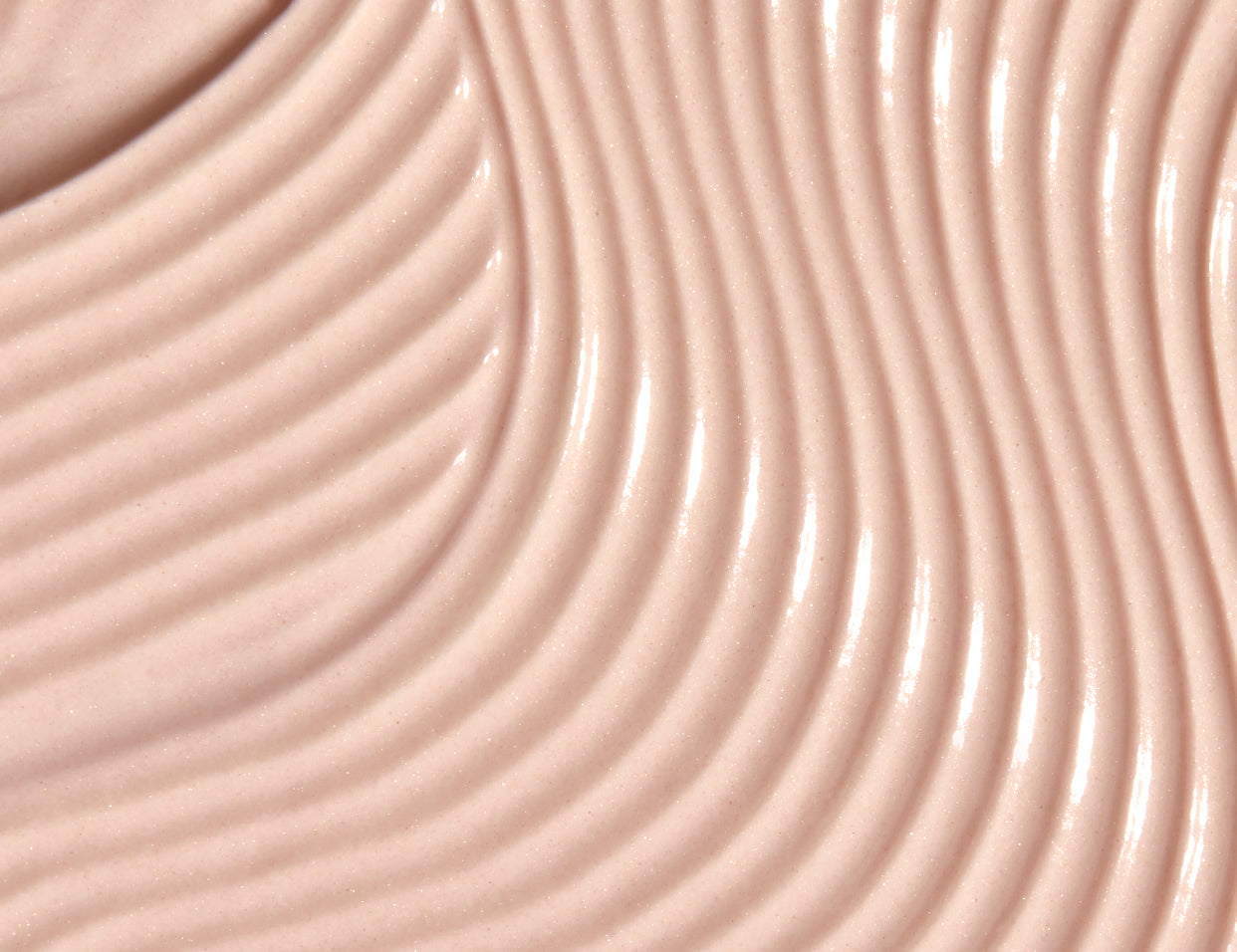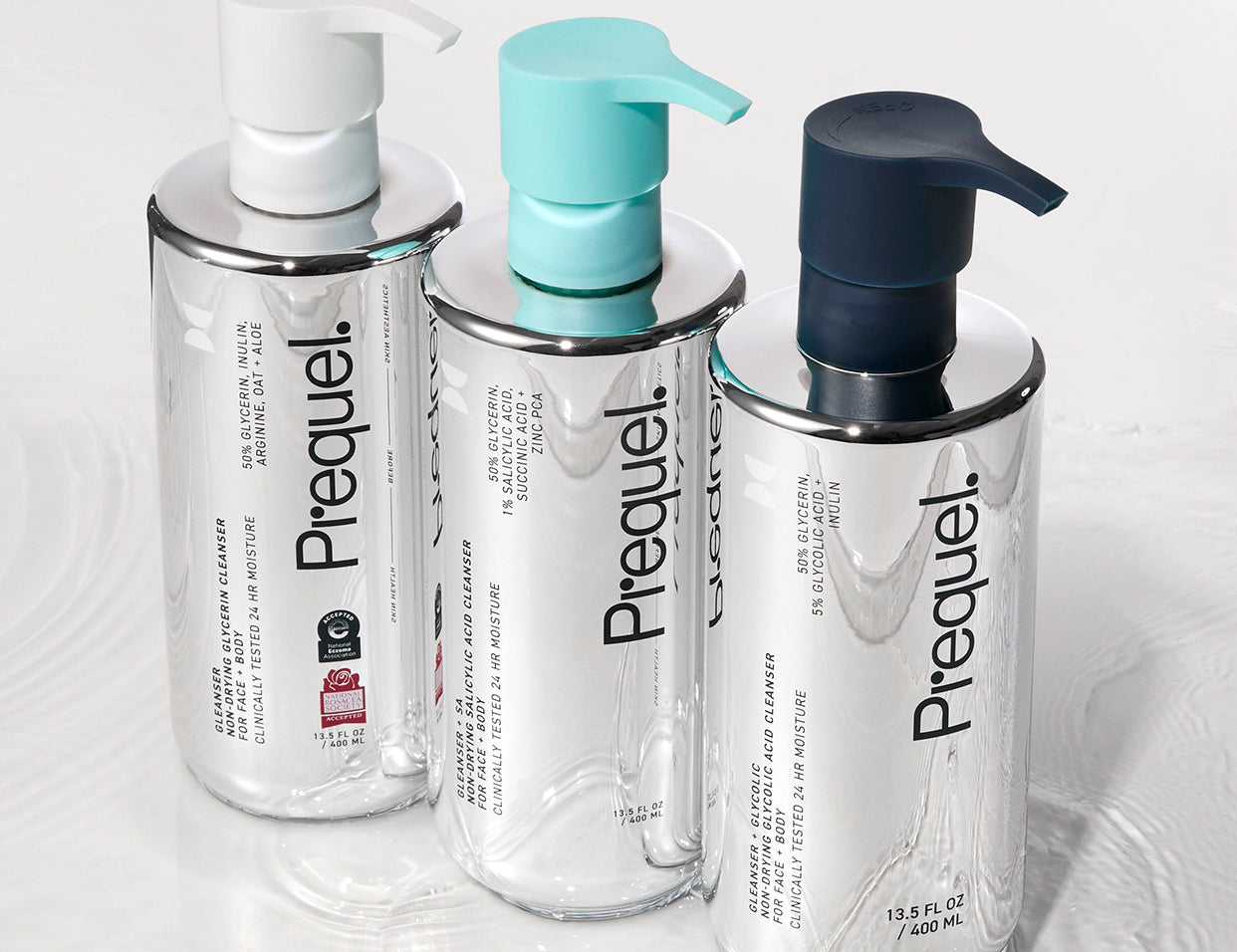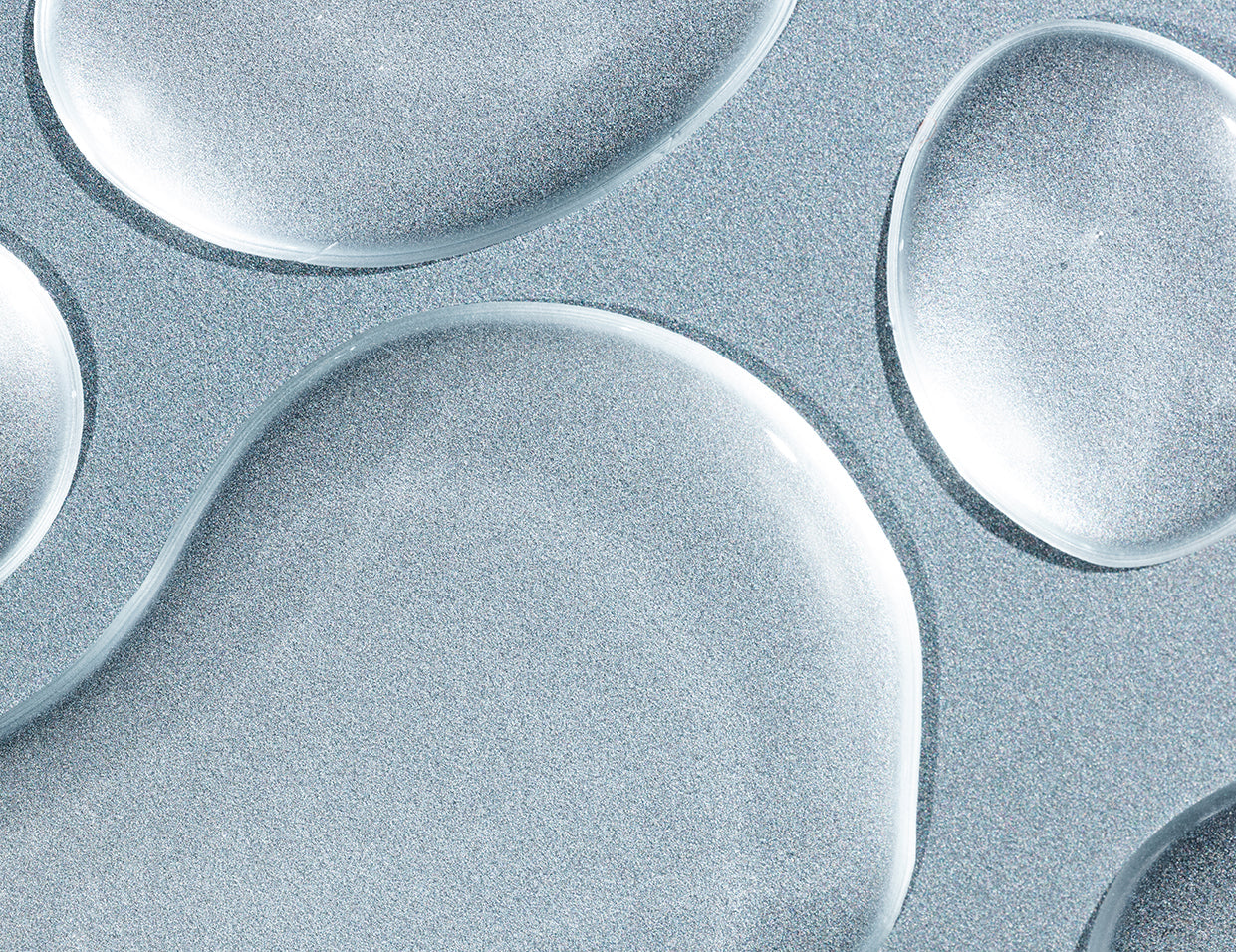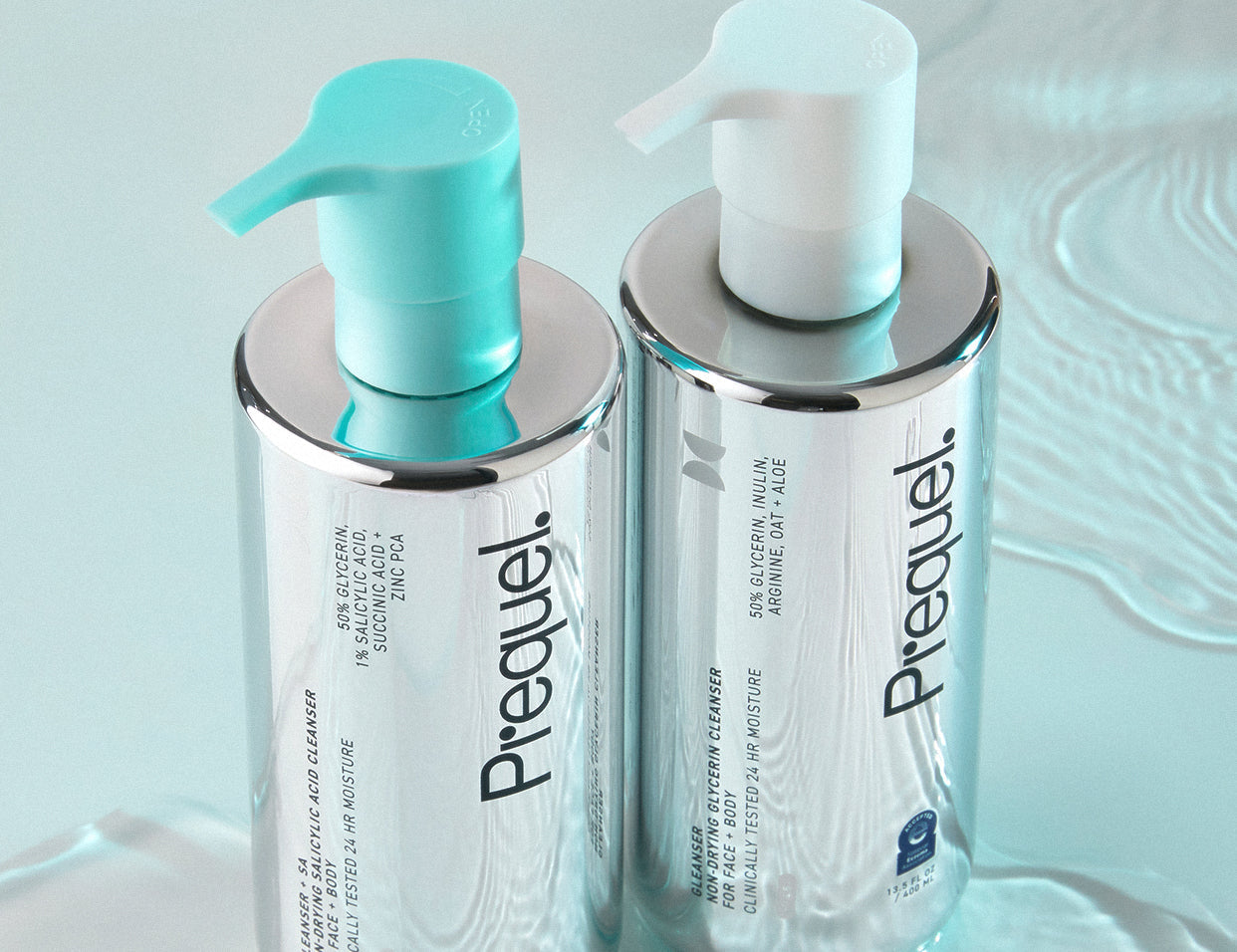“As a dermatologist, I cannot stress enough the importance of sun protection. Whether it is "chemical" or "mineral," sunscreen is the most important step in everyone’s skincare routine and often the most neglected.” - Dr. Sam Ellis
What Is Ultraviolet Radiation?
The sun emits three types of ultraviolet radiation, UVA, UVB, and UVC with only UVA and UVB radiation being relevant to the pathogenicity of the skin since UVC radiation is blocked by the earth’s ozone. Of the UV radiation that reaches the earth, UVB radiation accounts for 5-10%. It covers the wavelengths between 280-315 nm and penetrates the skin’s epidermis. These rays are responsible for erythema and inflammation commonly known as sunburn but also cause cellular DNA changes which can lead to skin cancer. Both UVA and UVB radiation are considered carcinogenic but through different mechanisms. UVA radiation accounts for the remaining 90-95% of radiation reaching the earth’s surface and covers the wavelengths between 315-400 nm. These rays penetrate deeper leading to damage in the dermal connective tissue which gives structure and support to skin. This damage to the deeper skin layers leads to premature skin aging also called photoaging. UVA radiation also causes indirect DNA damage that can lead to skin cancer. While the skin naturally contains melanin which acts as an innate sun filter, it cannot combat all solar damage and those with more melanated skin tones should still wear sunscreen to protect their skin. Skin also contains protective endogenous antioxidants that can quench some of the free radicals caused by sun exposure, but these can be depleted quickly. Topical sunscreen products can reduce photoaging and UV induced skin cancer by reducing the amount of UV radiation permeating into the skin.
How Do You Protect Your Skin From UV Radiation?
Topical sunscreen products contain active pharmaceutical ingredients that absorb specific wavelengths in the UV range and release that energy in the form of heat, preventing your skin from absorbing the UV rays. These products need to be reapplied every 2 hours if you are in the sun or more frequently if submerging skin in the water. In addition to topical sunscreen products applied directly onto the skin surface, photoprotective clothing can be used to limit UV exposure. Photoprotective clothing, which is specifically designed and tested for UV protection, can limit UV transmission through the use of specific materials, the weaving pattern, and the dyes used. Darker dyes such as black, blue, and red tend to limit UV transmission through the fabric and into the skin compared to lighter colors. Tighter weaves of clothing such as polyester and cotton can potentially offer more UV protection than linen or knitted fabrics. Photoprotective clothing is rated via the Ultraviolet Protection Factor scale or UPF with a UPF of 15 corresponding to 93.33% reduced UV radiation transmission to the skin. A UPF of 30 corresponds to 96.67% reduced UV transmission and a UPF of 50 corresponds to 98% reduced UV transmission. To best protect skin from solar radiation apply sunscreen to uncovered skin and wear photoprotective clothing. We offer our Prequel UPF 50+ hat that blocks more than 98% of UV radiation. Apply sunscreen to the face and neck and wear our Prequel UPF 50+ hat to give you even better UV protection, especially if you tend to forget reapplication of your topical sunscreen products.
What is SPF Value?
Topical sunscreen products can reduce photoaging and UV induced skin cancer by reducing the amount of UV radiation permeating into the skin. All sunscreen products include an SPF value which indicates the degree of protection against UVB and UVA-II (315-340 nm) radiation, which cause sunburn. There is an inverse relationship between wavelength and UV induced erythema so as the wavelength increases the erythema potential decreases. This means UVB radiation is more efficient at inducing a sunburn than UVA radiation. A popular misconception regarding SPF value is that the number refers to the amount of time skin protected by the sunscreen can be exposed to the sun without burning compared to unprotected skin. This is not the case. The SPF value is a ratio of the amount of UV energy needed to produce a minimal erythema dose on skin protected by the sunscreen product divided by the amount of UV energy needed to produce a minimal erythema dose on unprotected skin. This ratio corresponds to UV radiation and not time and UV radiation can vary by geographic location, altitude, time of the year, and time of day. Applying a sunscreen with an SPF 30 means the skin won’t redden or sunburn until it is exposed to 30 times more UV radiation than that is required to sunburn unprotected skin. The SPF value is only one of the characteristics a consumer should consider when purchasing a sunscreen product.
What is Broad Spectrum Sunscreen
Consumers should use sunscreen products labeled “Broad Spectrum '' which indicates it protects the skin from both UVB and UVA radiation which reduces both the risk of skin cancer and premature skin aging. This claim is substantiated by the sunscreen product achieving a minimum critical wavelength of 370 nm and an SPF>15. This means 90% of the UV radiation the sunscreen absorbs is below 370 nm at a minimum. It tells you how broad or how far your protection extends. Caveat, broad spectrum does not indicate the degree of UVA protection.
What Does PA++++ Mean?
One claim that indicates UVA protection is the PA++++ system often listed on Asian sunscreen products and obtained through the Persistent Pigment Darkening (PPD) test. This sunscreen parameter is crucial for those concerned about melasma, hyperpigmentation, or dark spots since UVA is primarily responsible for skin tanning. The PPD test measures the amount of UVA radiation required to induce skin darkening or tanning on skin protected by sunscreen compared to skin not protected by sunscreen. The numerical result is translated into one of the 4 categories PA+, PA++, PA+++, or PA++++ with the latter being the highest degree of protection. A PA++++ is equivalent to a PPD of 16 or higher which means skin protected by the sunscreen can withstand at least 16 times more UVA radiation before darkening compared to unprotected skin. The parameters of UVB protection, UVA protection, and broad spectrum are more important to consider when selecting a sunscreen than picking a sunscreen based on mineral vs chemical sunscreen filters. Sunscreen is crucial to every skin regimen to prevent skin cancer as well as photoaging and whether you prefer organic/chemical or inorganic/physical sunscreens is personal preference. The most important thing is to use it!
Introducing the Sun Barrier Broad Spectrum SPF 50 PA++++ Mineral Sunscreen
At Prequel we understand the importance of daily sunscreen application so we plan to develop a number of sunscreens both mineral to chemical as well as varying by texture and finish. The key is finding a sunscreen you love that you want to apply and reapply, there is no one-size-fits-all sunscreen. We are excited to offer Sun Barrier Broad Spectrum SPF 50 PA++++ Mineral Sunscreen as our first sunscreen. It is a lightweight semi-transparent mineral sunscreen that provides UVA and UVB protection while boosting the skin’s moisture barrier and protecting the skin from additional environmental stressors. Formulated with 18% non-nano Zinc Oxide, it is a physical sunscreen that, with the addition of bioactive antioxidant compounds, minimizes oxidative stress throughout the day. This peachy hued sunscreen absorbs easily and provides a natural, radiant finish. As with all physical sunscreens that rely on titanium dioxide and/or zinc oxide there is a potential for a white or bluish cast on deeper skin tones. This is because the minerals are not soluble and disperse rather than dissolve in a formula and they do not penetrate the skin.
Benefits of the Sun Barrier Broad Spectrum SPF 50 PA++++ Mineral Sunscreen
Sun Barrier Broad Spectrum SPF 50 PA++++ Mineral Sunscreen contains antioxidants including tetrahydrocucuminoids, standardized molecules from turmeric root, that scavenge free radicals, reduce irritation and increase skin brightness. Pongamia is an extract that helps reduce skin stress following UV exposure and environmental aggressors. We also added bisabolol, calendula, and centella asiatica to reduce the appearance of redness and provide skin relief. The formula is also a lamellar phase emulsion so it is structurally similar to intercellular skin lipids, supporting the skin barrier, guarding against external irritants, reducing moisture loss, and promoting skin luminescence.
Our Sun Barrier mineral sunscreen is non-greasy, fragrance-free, hypoallergenic, allergy-tested, suitable for all skin types, safe for sensitive skin, safe for eczema prone skin, dermatologist developed, dermatologist tested, safe for use around the eyes, and non-comedogenic. It also received the National Eczema Association Seal of Acceptance and National Rosacea Society Seal of Acceptance.
DISCLAIMER: All skin care articles are intended to help educate on specific ingredients and skin care topics. Our articles are written to be informative and informational. Any reference to a specific patient experience is not a medical suggestion for treatment. Please note that any Prequel products with referenced ingredients are formulated for Cosmetic Use Only and NOT intended as replacements for physician advice and/or pharmaceutical product recommendations.




